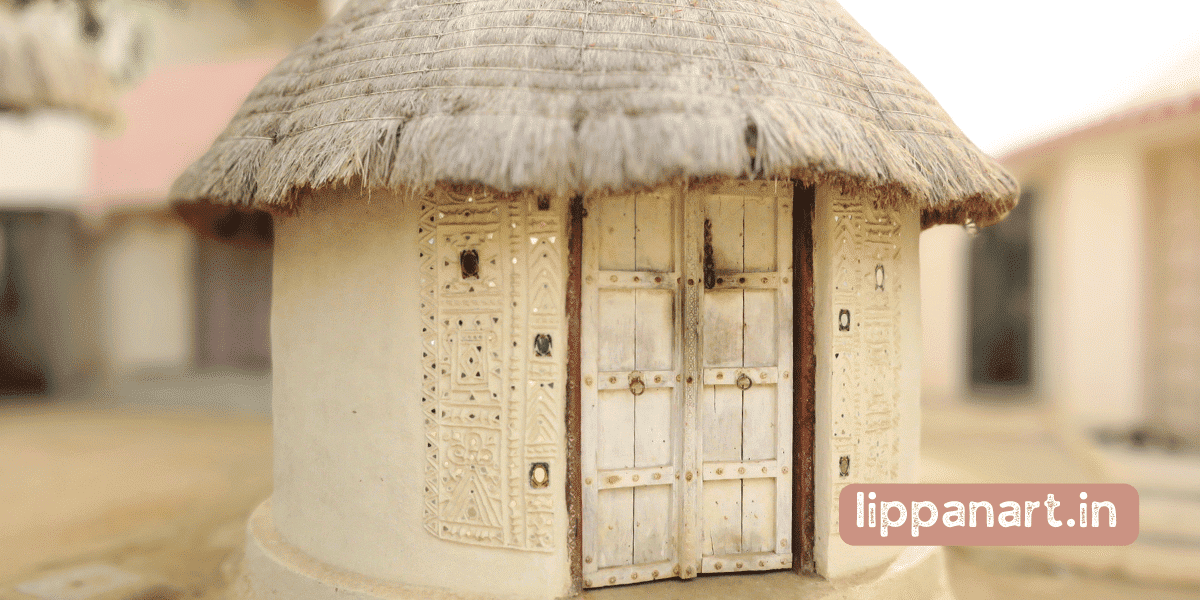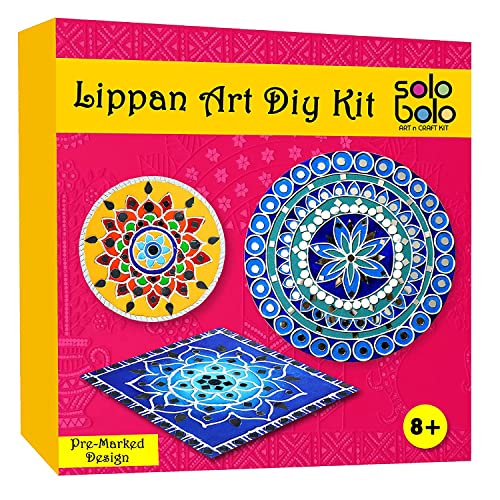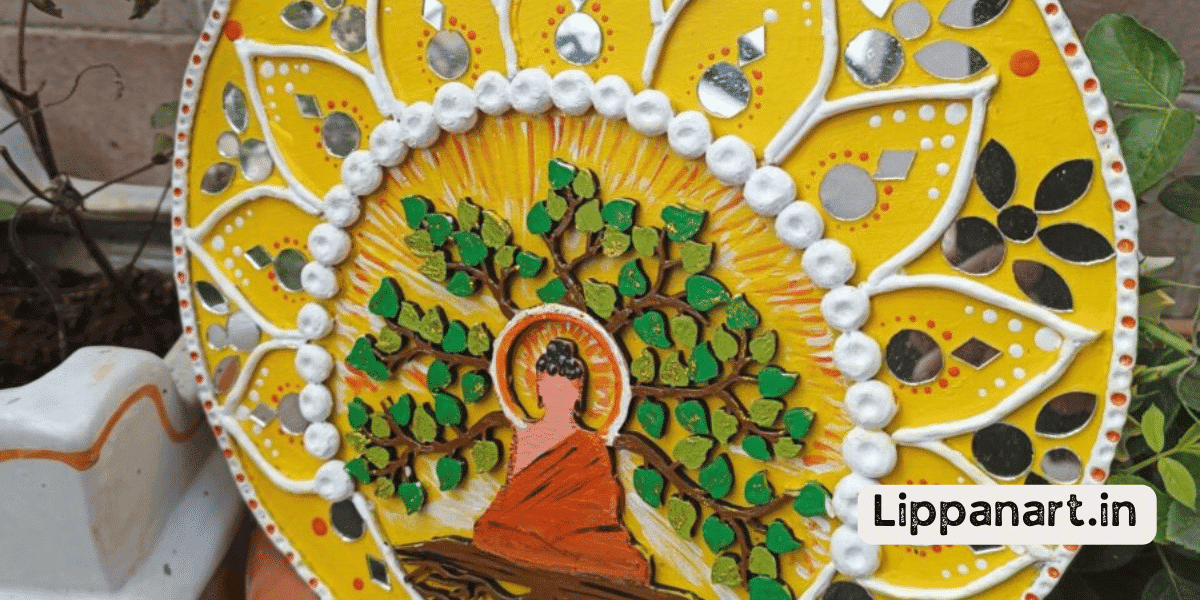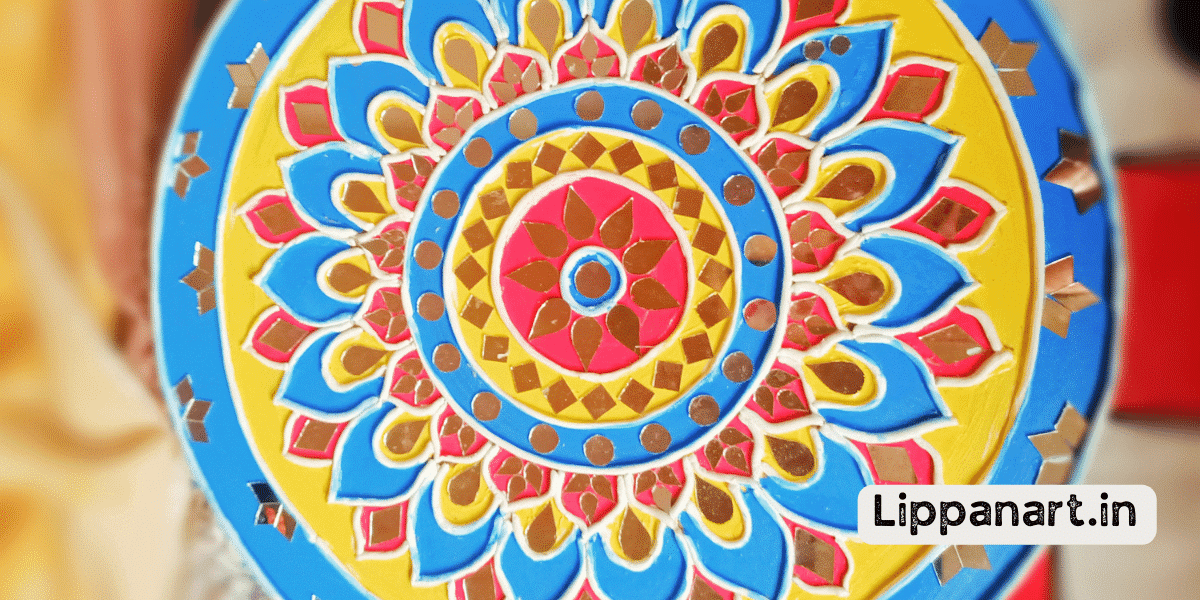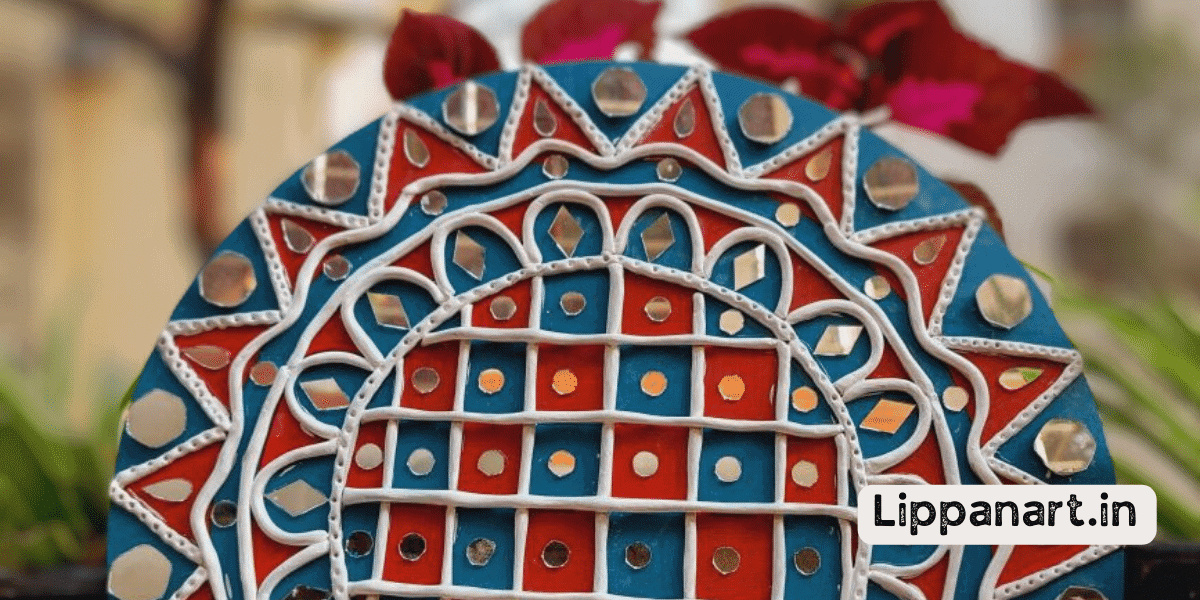You’ve heard of art, but do you know about the intricate and vibrant Lippan Art Houses? This unique form of Indian folk art has been around for centuries, with an estimated 400,000 pieces produced each year.
It’s time to explore the history, symbolism, and cultural importance of this inspiring art form. Discover the history of the craft, the traditional techniques, and the role of women in its production.
Innovate with us as we chart out the prospects of Lippan Art Houses and their preservation in the modern age.
Key Takeaways
- Lippan Art Houses originated in rural Gujarat, India and have been passed down through generations.
- Lippan Art Houses have influenced the identity, rituals, art, and gender patterns of the Kutch region.
- Lippan Art Houses have shaped the cultural heritage of the region and preserved its history and traditions.
- Lippan Art Houses are closely intertwined with the tribal identity of the Kutch region.
Introduction to Lippan Art Houses
Lippan Art Houses are traditional Indian textile art crafted by the Khatri community. They are made using natural materials such as mud, clay, and cow dung and decorated with intricate designs and patterns. This type of art has been around for centuries and is still popular today. Lippan Art Houses are characterized by their combination of traditional and modern techniques.
The art houses are created to represent cultural influences and beliefs and symbolize hope and good luck. They are also used to store items safely and bring prosperity to households. As an ideal way to add a unique touch to any space, Lippan Art Houses are stunning examples of how traditional and modern can be blended. They are also a way to pay tribute to the hard work and dedication of the Khatri artisans.

The Historical Roots of Lippan Art
Lippan Art Houses are a popular form of art with roots that span centuries. Originating in rural Gujarat, India, this art form has been passed down through generations of artisans and craftsmen. Traditionally, it served as a means to adorn the walls of residences and various public spaces with intricate designs that narrated the tales of the villages and their residents. Colour has always been an important part of Lippan Art, with artisans using a variety of hues to bring the scenes to life.
Today, Lippan Art is experiencing a revival. This has provided economic opportunities for rural communities and inspired a new generation of artisans to take up the craft. It’s also being used to preserve the cultural heritage of the region and bring recognition to the traditional tools and techniques of the artisans.
The beautiful works of art produced by Lippan Art Houses are far more than simple decoration. They represent India’s vibrant cultural history and are indicative of the artisans’ skill and effort. As such, they’re an integral part of India’s rural revival.
Traditional Techniques and Materials
For centuries, the artisans of Lippan Art Houses have created beautiful clay forms enhanced by mirror work, with a vibrant colour palette and sourced from the highest quality materials.
The combination of techniques and materials used, such as clay, mirror pieces, organic and non-organic materials, and design motifs, create a unique aesthetic that’s distinctively Lippan.
This combination of techniques and materials gives the Lippan Art Houses an edge of innovation, making their art a symbol of culture and history for generations to come.
The traditional techniques and materials used in this art form are truly remarkable and worth admiring.
- Editor’s Choice
- Best Seller
- Amazon Choice
Symbolism and Cultural Significance
The Lippan Art Houses are renowned for their beauty, but there’s much more to them than just their aesthetic appeal. The colours, patterns, rituals, customs, craftsmanship, and imagery of these folk artworks are deeply symbolic and culturally significant.
They represent the identity, heritage, and beliefs of the people who crafted them, and the combination of colours, patterns, and textures come together to tell the stories of the makers. Furthermore, the artwork displays the values of the culture and offers a sense of community and belonging to those who live and work with it.
The symbolism, meaning, and cultural significance of these pieces are undeniable, and they’re appreciated not only for their beauty but also for what they represent.
Lippan Art in Contemporary Times
Lippan Art Houses have become a popular and integral part of contemporary décor. This traditional art form has evolved, with its meaning and symbolism becoming increasingly relevant in modern times.
Here are some of the ways Lippan Art is being used in contemporary culture:
- Breaking gender roles: Lippan art is historically practised by women and is now being used to challenge and empower female creators.
- Natural dyes and materials: Artists are using sustainable and eco-friendly materials to create their artwork.
- Community collaboration: This art form now includes collaboration between different members of the community.
- Artistic expression: By combining traditional art with modern techniques, artists are able to express themselves in new and innovative ways.
- Technology integration: Technology is being used to create stunning visuals with the help of 3D printing and digital art tools.
Lippan Art is an integral part of contemporary culture, and its symbolism and cultural significance continue to evolve. By combining traditional art forms with modern techniques, this art form allows for unique and inspiring pieces to be created.
- Editor’s Choice
- Best Seller
- Amazon Choice
Geographic Variations and Regional Styles
Lippan Art Houses are renowned for their distinct regional variations and styles, ranging from the intricate and colourful designs of Gujarat to the geometric shapes and patterns of Rajasthan. Each region is able to bring its unique vision to the art form, utilizing a variety of embellishments and traditional techniques to create a truly unique experience.
Additionally, some regions have begun to incorporate modern designs and colours into the craftsmanship of these art houses, allowing for the art form to remain relevant in today’s world.
Ultimately, the regional variations of Lippan Art Houses are a testament to the innovation and creativity of the various cultures and regions in India.
Role of Women in Lippan Artistry
Women play an integral role in the preservation and success of Lippan Art Houses as they pass down traditional craftsmanship techniques from generation to generation. This intergenerational learning provides economic opportunities for female artisans while upholding the culture of the region.
Here are five ways women are contributing to the success of this art form:
- Empowerment through creative expression
- Upholding traditional craftsmanship techniques
- Passing down knowledge from one generation to the next
- Offering economic opportunities for female artisans
- Preserving local culture and traditions
The dedication of these talented women ensures the legacy of Lippan art houses for generations to come. Their creative energy is pushing the boundaries of this traditional art form, empowering others to do the same.
- Editor’s Choice
- Best Seller
- Amazon Choice
Preservation Efforts and Sustainability
Reviving and sustaining the traditional Indian art form of Lippan Art Houses requires a few strategies. Local outreach is helping to spread awareness and create opportunities for subsistence living. Social media is also being leveraged to extend outreach to a wider audience and garner increased attention for the craft. Additionally, environmental impact is being considered with the use of natural and sustainable materials.
These efforts are helping to revive interest in Lippan Art Houses and ensure their preservation and sustainability. Through continued innovation and creative solutions, the craft will be able to thrive for generations to come.
| Strategy | Impact |
|---|---|
| Local Outreach | Increased Awareness & Subsistence Living |
| Social Media | Broader Audience & More Attention |
| Environmental Impact | Use of Natural & Sustainable Materials |
Lippan Art as a Cultural Heritage
Lippan Art Houses are a traditional form of art originating from the Kutch region of Gujarat, India. As a cultural heritage, their importance is undeniable, and the influence on the region’s identity, rituals, art, and gender patterns is still evident today. Here are five ways that Lippan Art Houses have shaped the cultural heritage of the Kutch region:
- Rituals associated: Traditions and rituals associated with Lippan Art Houses are part of the tribal identity of the Kutch region and continue to be practised today, preserving the history and culture of the region.
- Artistic influences: Lippan Art Houses have a deep and longstanding influence on the art of the Kutch region. Even today, its presence endures, offering valuable insights into the culture and traditions of the region.
- Tribal identity: The art forms of Lippan Art Houses are closely intertwined with the tribal identity of the Kutch region, and this has been preserved and passed down for generations.
- Impact of globalization: Globalization has had a profound impact on Lippan Art Houses, changing the way they’re practised and viewed and how the culture of the Kutch region is seen.
- Gendered patterns: Women are often the primary creators of these art forms, and this gendered pattern is still seen today. It’s an important part of the cultural heritage of the Kutch region.
Lippan Art Houses are an important part of the cultural heritage of the Kutch region and a reminder of its past. The revival of these art forms will ensure that they continue to shape the cultural heritage of the region.

Future Prospects and Innovation in Lippan Art
The future of Lippan Art Houses is full of possibilities and innovation. Modern trends open up new avenues of exploration for artists to take traditional Lippan Art in new and exciting directions.
Utilizing creative approaches to the craft, artists can experiment with new materials, shapes and colours to create unique works of art.
Additionally, considering environmental effects can lead to art houses that are more sustainable and eco-friendly.
Finally, changing market dynamics create new opportunities for Lippan Art Houses to find a place in the modern art market.
With so many options available, the future of Lippan Art Houses is sure to be an exciting one.
Conclusion
Lippan art is a cultural gem that has the potential to live on for generations. Its traditional techniques, symbolism, and materials have a unique beauty that captivates and transports you to another world.
It’s a testament to the resilience and creativity of India’s female artists and a reminder of the importance of preserving and celebrating traditional art forms.
As you admire the intricate patterns and vibrant colours, you can’t help but be inspired by the remarkable history and significance of lippan art.
